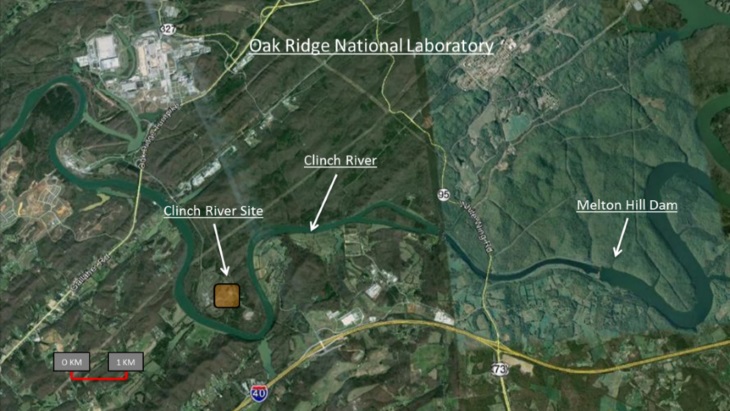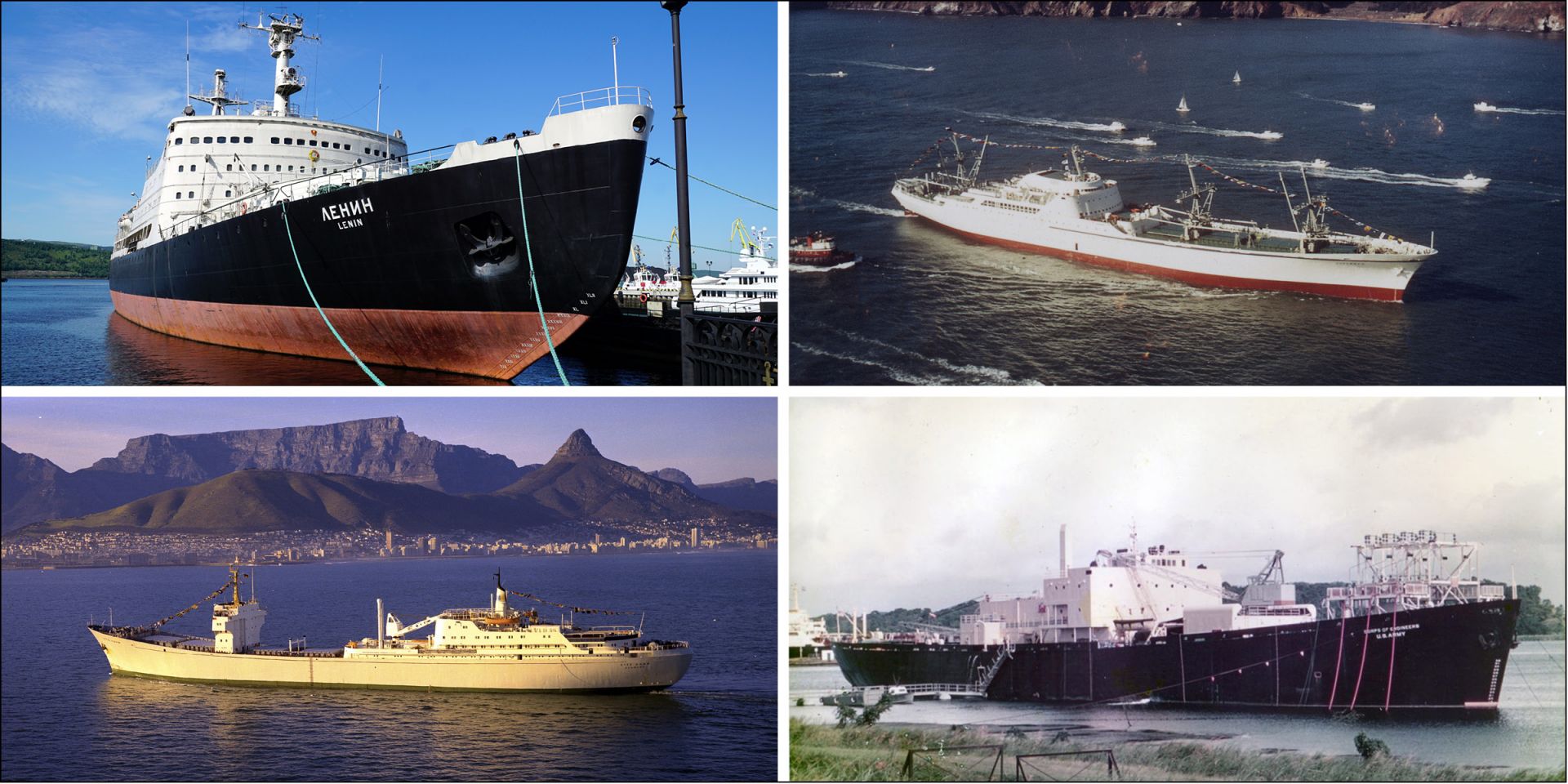The USS Enterprise (CVN-65)
The Naval Academy ANS student section, with support from the Washington, D.C., local section, held its semiannual dinner on March 29 in Annapolis, Md. The event was attended by more than 100 people, including midshipmen, professors from the U.S. Naval Academy, local ANS members, and ANS President Steve Nesbit.
The evening’s program was hosted by the student chapter president, Midshipman First Class Sara Perkins, and was headlined by the director of the Naval History and Heritage Command, Rear Admiral (retired) Samuel Cox.
Cover of the April 1962 issue of Nuclear News (left), ATR core diagram appearing in October 1969 issue of Nuclear News (center), and cover of the October 1969 issue of Nuclear News (right).
The Department of Energy and Idaho National Laboratory announced this week that the sixth major core overhaul of the Advanced Test Reactor (ATR) is complete, after an 11-month outage that began in April 2021. The ATR was built as a key piece of mission support for U.S. Navy programs and first reached full power in 1969. Today it remains “the world’s largest, most powerful and flexible materials test reactor,” in the words of INL—quite a feat for a reactor that was planned over 60 years ago.
The Fukushima Daiichi site before the accident.
Today’s #ThrowbackThursday post looks back at some of Nuclear News’s reporting on the Fukushima Daiichi accident, which was initiated 11 years ago tomorrow. The news reporting includes the initial coverage of the event from the pages of Nuclear News in April 2011 and the in-depth coverage of the 2011 ANS Annual Meeting, where special sessions focused on the accident.
An advanced nuclear reactor technology park is hoped for the 935-acre Clinch River site. Image: TVA
Last week’s announcement from the Tennessee Valley Authority about its “New Nuclear Program,” which outlines the potential development of the Clinch River site near Oak Ridge National Laboratory in Eastern Tennessee, is the catalyst for this week’s #ThrowbackThursday post. The Clinch River site was originally planned to be the location for the Clinch River Breeder Reactor, a project that, at the time, was meant to be the future of the nuclear industry in the United States.
The young Jimmy Carter, years before his presidency. (Click to view entire graphic.)
Jimmy Carter is trending on Twitter this week because of his ties to nuclear power. Carter, the 39th president of the United States, was a member of Rickover’s nuclear navy about 70 years ago when he was assigned to help in the aftermath of an accident at the Chalk River Laboratory in Ontario, Canada.
The USS Enterprise was officially decommissioned in February 2017.
The USS Enterprise (CVN-65), the world's first nuclear-powered aircraft carrier, has been named an ANS Nuclear Historic Landmark. The designation was officially recognized on December 1 during the ANS Winter Meeting in Washington, D.C.
The inscription on the plaque presented by ANS reads, “In recognition of the most advanced nuclear engineering technology of the 1950s and for her 51 years of service to our nation, the USS Enterprise (CVN-65) is designated as an ANS Nuclear Historic Landmark.”
ANS is honoring Civil Rights-era students and the U.S. Dept. of Energy with inaugural award for integrating first public schools in the southeast U.S.
The American Nuclear Society (ANS) is honoring 85 former students from Tennessee, known as the Scarboro-Oak Ridge, TN 85, and the U.S. Department of Energy (DOE) with the society’s inaugural Social Responsibility in the Nuclear Community Award for their roles in integrating in 1955 the first public schools in the southeastern United States. The award will be presented at the upcoming 2021 ANS Winter Meeting and Technology Expo (Nov. 30 – Dec. 3) being held in Washington, D.C.
J. Ernest Wilkins Jr. was honored posthumously by the University of Chicago at a special event held on March 2, 2007. (Photo: Dan Dry/Wikimedia Commons)
ANS past president (1974–1975) J. Ernest Wilkins Jr. was featured in a recent History.com article highlighting the unsung contributions that Black scientists made to the Manhattan Project.









.jpg)
 Today’s #ThrowbackThursday post looks at the initial debate surrounding the conversion of research reactor fuel from high-enriched uranium to low-enriched uranium. An article published in the
Today’s #ThrowbackThursday post looks at the initial debate surrounding the conversion of research reactor fuel from high-enriched uranium to low-enriched uranium. An article published in the 


 A special issue of the ANS journal Nuclear Technology, published last month, observes the 75th anniversary of the Trinity experiment, the world’s first nuclear explosion, on July 16, 1945, near Alamogordo, N.M. The experiment was a first step toward the conclusion of the Manhattan Project and the end of World War II. The special issue, The Manhattan Project Nuclear Science and Technology Development at Los Alamos: A Special Issue of Nuclear Technology, was sponsored by Los Alamos National Laboratory and curated by Mark Chadwick.
A special issue of the ANS journal Nuclear Technology, published last month, observes the 75th anniversary of the Trinity experiment, the world’s first nuclear explosion, on July 16, 1945, near Alamogordo, N.M. The experiment was a first step toward the conclusion of the Manhattan Project and the end of World War II. The special issue, The Manhattan Project Nuclear Science and Technology Development at Los Alamos: A Special Issue of Nuclear Technology, was sponsored by Los Alamos National Laboratory and curated by Mark Chadwick.



